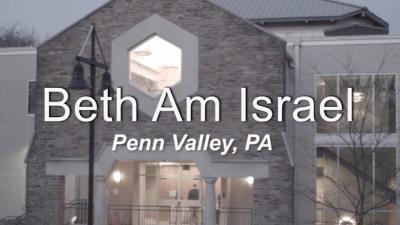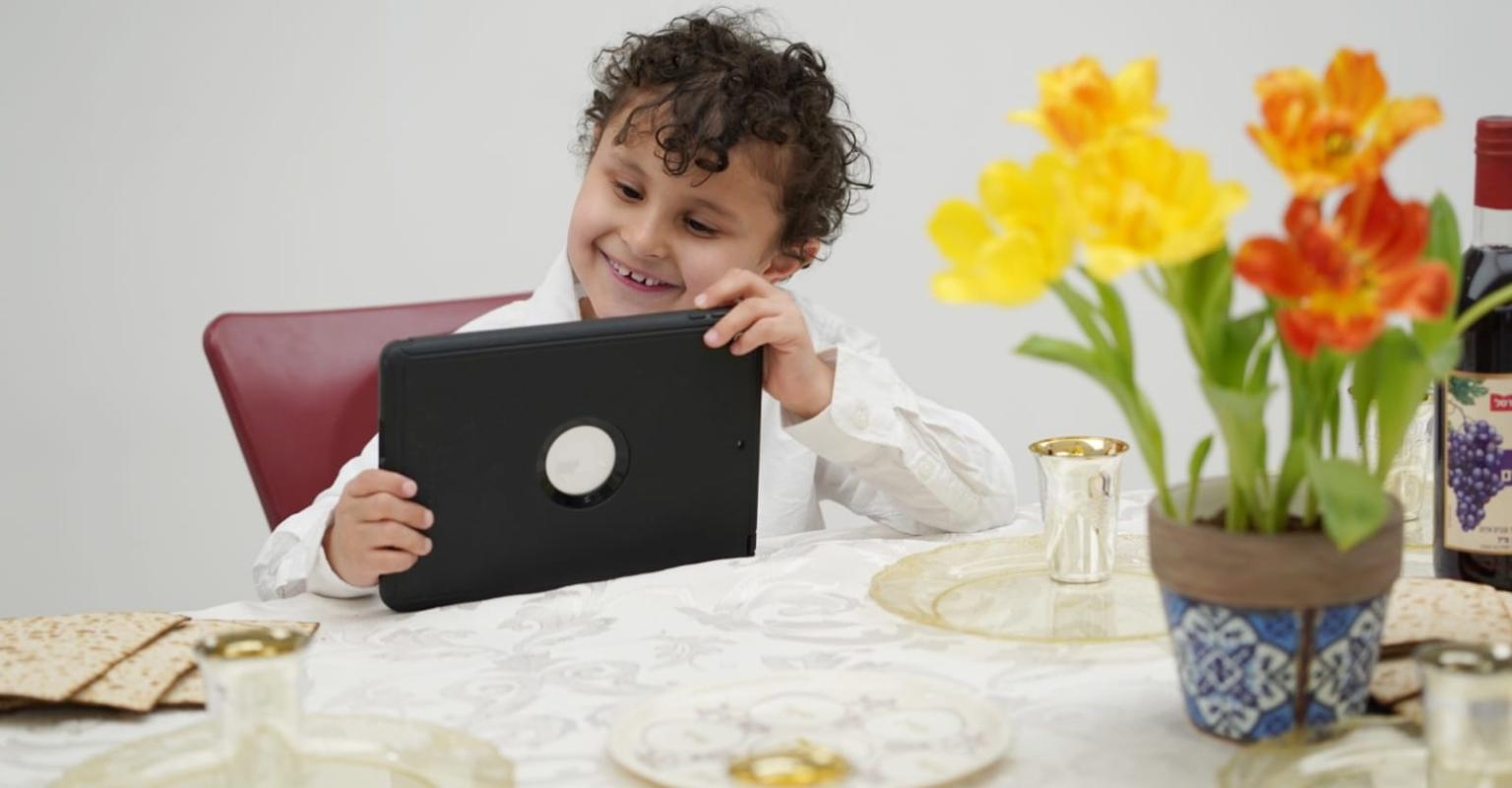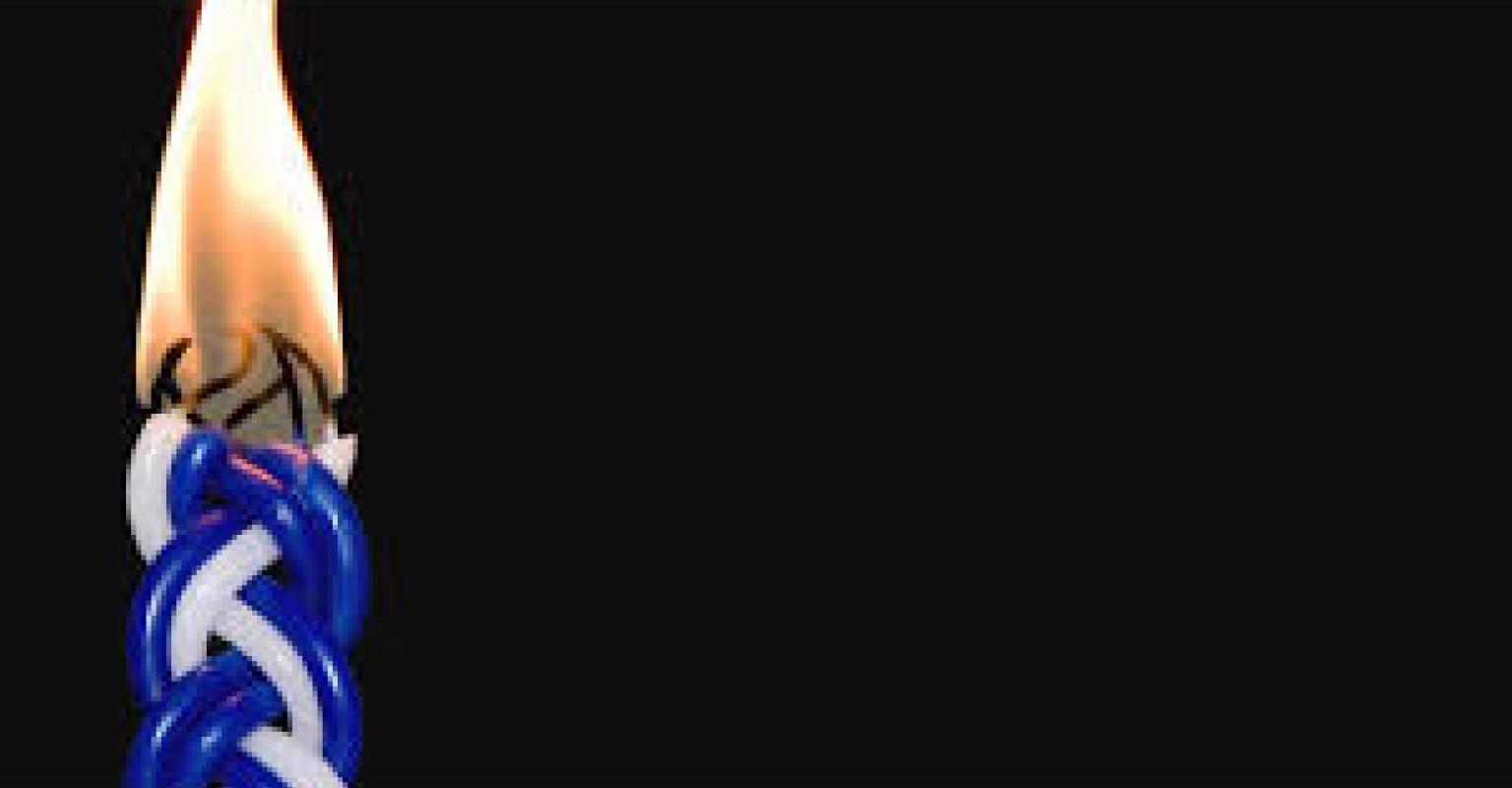Shabbat Centered Model: Beit Midrash
Congregation Beth Am Israel, Penn Valley, PA

Model Summary:
The Shabbat Morning Beit Midrash model promotes “real-time” Jewish learning and living for children in kindergarten through 6th grade and their families. Active, ongoing parental participation in weekly Shabbat morning worship and learning is a hallmark of Beth Am Israel’s education model. Throughout the morning, the entire congregational community gathers together for parts of the Shabbat service. Family services and parent-led Torah study are some of the highlights of Beit Midrash mornings. The Beit Midrash model is designed to build community, empower learners, and to provide learners with inspiring role models. It is an intergenerational model, building relationships among the entire community.
Who are the Learners?
-
130 learners in K-6 and their parents
-
Younger children who participate in Tot Shabbat
- Madrichim, teens in 7th-12th grade
Madrichim engage in learning available to them through a partnership between Beth Am Israel and Gratz College. Madrichim choose to study either “Teen Torah” or about classroom teaching. Note that this model engages with the broader community. So, while they may not be the specific learners targeted by the model, we keep them in mind when planning, with messaging, and when educating about the norms of our Shabbat mornings. They certainly play a role as community builders.
Who are the Educators/Learning Facilitators?
-
The education director, rabbi and cantor lead adult learning (Torah study, studying prayers)
-
Congregants (Torah study, Prayer Book Hebrew)
-
Outside educators (Torah Yoga)
-
Rabbinical student (Melody and Meaning)
-
1-2 teachers/grade level – the same classroom teacher who students meet with during the week
-
Parents lead classroom activities
-
6th graders (Hebrew Haver) assist in classrooms
-
Teen madrichim assist in classrooms
When Does the Learning Happen?
The Beit Midrash model takes place every Shabbat morning from 9:00 am - 12:30 pm. While each Beit Midrash Shabbat is slightly different depending on holidays, life cycle events, and other events, some of its regular components include:
-
9:00 am: Families arrive. Signage on all doors indicates 2-4 choices for morning options for adult learning, such as Torah Study with the Rabbi, Torah Yoga, Melody, and Meaning, or Prayer Book Hebrew. Adults go to the session of their choice while K-6 learners meet with teachers in their rooms.
-
9:45 am: Learners and parents come to the sanctuary where the rabbi and cantor, both playing guitar, lead the community in birkot hashachar and pseukei d’zimrah. Some learners sit with classmates, some sit with their families. Learners return to their rooms. Depending on age children either head back to rooms near the beginning, middle, or end of shacharit.
-
A once a month family Torah service, called “Hands-on Torah,” is held for K-3 and for grades 4-6. This service includes 2 aliyot and discussion and activities based on a single verse of Torah. All of this planned for children and families.
-
Once a month there is a grade level shacharit service (beginning about 10:05) led by the education director. This service parallels the service in the sanctuary meaning that it takes place when shacharit happens in the main sanctuary.
-
A once a month, Family Torah Study, is held in each room. During Family Torah Study a parent in the class signs up to lead a discussion and activity, such as a game or song or reading a story, on that week’s Torah portion/parasha.
-
My Hebrew Haver: Each year each 6th grader is assigned to a younger classroom and every Shabbat morning they help out with Hebrew for about 15-20 minutes.
-
Madrichim: 7th-12th graders assist in classrooms. Each madrich or madricha is required to attend Teen Torah Study or Jewish Leadership, classes that occur weekly at BAI on Shabbat morning.
- Parents mingle and socialize in halls. Coffee and pastries are available in the foyer throughout the morning. This mingling is another opportunity for building community.
Where Does the Learning Happen?
Throughout the congregation: classrooms, sanctuary, hallways, and more.
What is the Learning? How is it Designed?
-
By living and experiencing Shabbat morning prayer, learners learn the tefillot. Learning also focuses on the parshah and values learned from the parshah. Classroom teaching, which includes the Hebrew language, varies from class to class. It might, for example, include having grape juice and challah or activity around performing mitzvot, lessons on Israel, the meaning of the tefillah, Torah stories, God Talk. The learners meet with the same teacher on Shabbat and weekdays so learning may be carried over from the weekday.
-
Learning also intentionally builds community and relationships within grade-level, between family members, and with the BAI community as a whole. This is intentionally planned into Beit Midrash Shabbat.
- Adult learning, as described above, includes a wide variety of learning opportunities. In addition to facilitated learning, adults may also choose to spend their time in a quiet, meditative space (such as the chapel).
What Were You Trying to Achieve with this Model?
The current model evolved over time. It began as an alternative to a Sunday morning model that was becoming too large as well as a way to start something on Shabbat morning for families. At first, a few families gave it a try. As the synagogue continued to grow, the Shabbat Beit Midrash grew and fewer families were opting for Sunday morning. Over time, the Shabbat Beit Midrash model became the model of choice and the Sunday morning option was no longer sustainable. The sentiment is that people come to the congregation for community. If the community is present on Shabbat, then Shabbat is the time to be at the congregation.
Key First Steps and Recruitment Plan:
-
Congregation Beth Am Israel sees themselves as different from other congregations: there is no sisterhood, no men’s club, they are very egalitarian. There is a sense of being unique and they are the only synagogue in the area with a weekly only Shabbat model. They are very proud to have family engagement in a full-fledged, well-established Shabbat model.
- The congregation makes every attempt to connect individually with families. Clergy and the education director reach out individually. They have found that those who are not connected to community - those who drop off their children rather than participate in the Beit Midrash - have a higher dropout rate. We emphasize that the Beit Midrash model includes parents. A number of people who join Beth Am Israel, join because of the educational model, often hearing about it from current members.
Role of Governance and Clergy:
Clergy are integral to the Beit Midrash model. The rabbi and cantor lead Shabbat morning services for the entire community – which includes the Beit Midrash families. The rabbi and cantor lead adult learning sessions for parents. Planning and visioning for the model also include the clergy and other educational leaders.
Budget:
There isn’t an additional budget as this is the only model for learners.
Hiring Needs:
-
Unless a teacher lives within walking distance of the congregation, the teacher must be willing to drive on Shabbat.
-
The teacher needs to be flexible. Schedules may change, because the Beit Midrash is Shabbat morning other things (e.g. life cycle events and holidays) may impact on the Beit Midrash.
-
The teacher needs to be well prepared. Because there is no writing on Shabbat, a teacher can’t fall back a number of activities, such as an art project.
-
The teacher needs to be comfortable with parents coming in and out of the classroom.
-
Congregation Beth Am Israel looks for teachers who are creative and flexible. A background in the arts of music and drama is very helpful.
Relationship of Model to Congregational Learning System:
This is the entire model – not an alternative or choice within a model.
How Do You Describe Your Congregation?
-
Liberal-Conservative congregation
-
375 families
-
1 rabbi, 1 hazzan, 1 executive director, full-time ed director
- Models-In-Action
- Shabbat
- Intergenerational Learning
- After School and Beyond
- Congregational Learning
- Teen Engagement
- Educator Training
Discover more

Shabbat Centered Models focus on coming together within the context of Shabbat to worship, study, and connect to one another.

Fun educational activities to help people with disabilities learn and connect with the Jewish Holidays and traditions.

This activity is part of a series of 10 holiday-centered activities intended for students in grades K-4.
